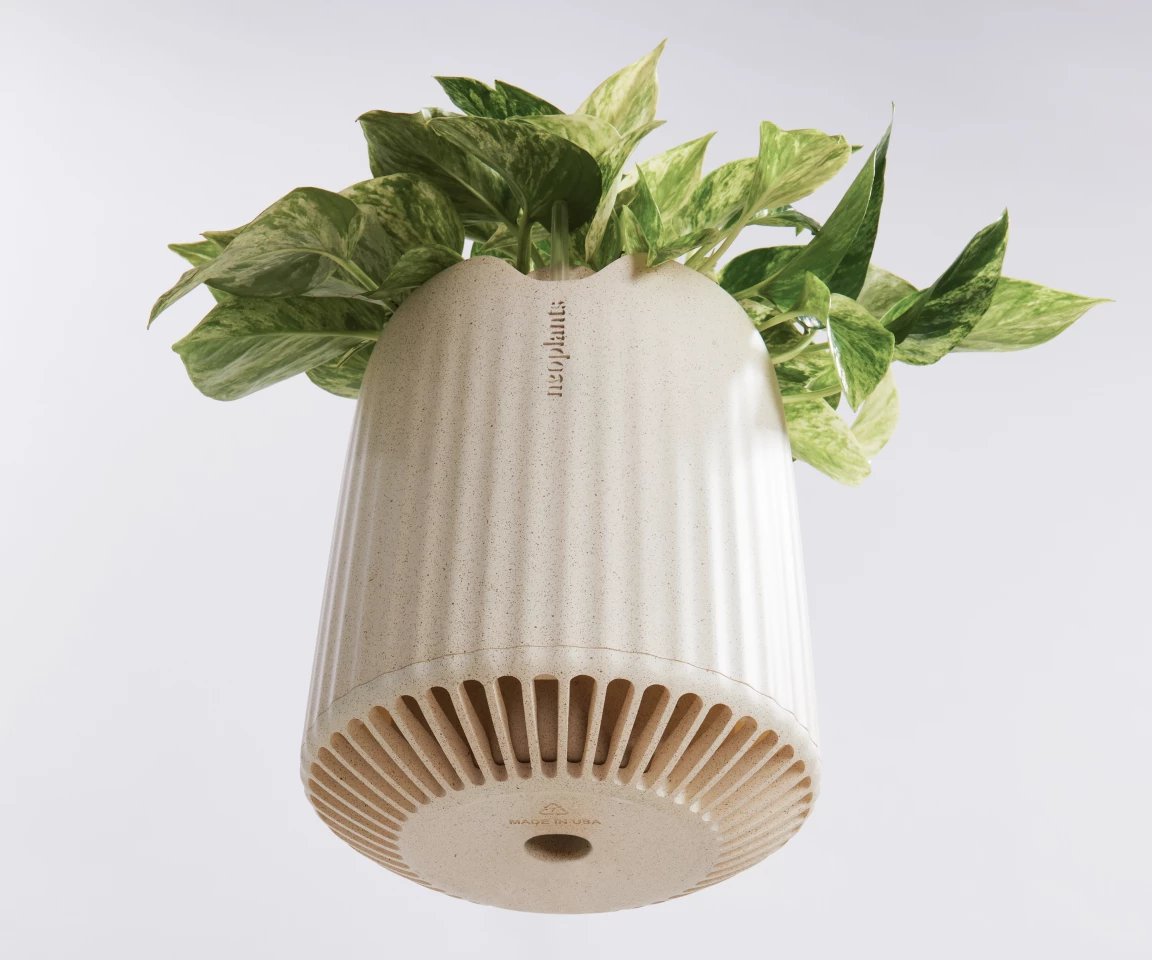Pothos plants are already known for being particularly good at purifying indoor air, so imagine if it were possible to make them 30 times better at doing so. Neoplants claims its Neo PX system does just that, using special soil-dwelling bacteria.
We first heard about biotech startup Neoplants early last year. At that time, the company announced the development of a genetically engineered pothos plant – the Neo P1 – which was said to be the equivalent of up to 30 regular houseplants in terms of air purification performance.
More specifically, the plant excelled at capturing and neutralizing toxic airborne VOCs (volatile organic compounds) that are given off by carpets, furniture, paint, cleansers and other household materials. The plant did so with a little help from special microbe-containing "Power Drops" that users would have to regularly add to the soil.
Although the Neo P1 is still being tweaked for optimum performance, Neoplants has improved the Power Drops to the point that they are reportedly now capable of making regular pothos plants 30 times better at neutralizing VOCs.
That's where Neo PX comes in.
The system consists of an unmodified marble queen pothos plant, potting soil, a system-specific plant pot, and of course a supply of Power Drops. Those drops in turn contain a special strain of Pseudomonas putida bacteria, which have been selectively bred over the course of five years for their appetite for three of the most common household VOCs – benzene, toluene and xylene.
The microbes also receive nutrients from the plant, plus they feed on soy protein in the drops.

Once added to the soil, some of the bacteria live on and around the plant's roots, while others migrate up onto its leaves and stem. The latter group help the plant capture VOCs, which are carried down to the roots. The former group then take up and metabolize those compounds, converting them into carbon sources such as amino acids and sugars which feed the plant – so it's definitely a symbiotic relationship.
That said, the bacterial population does eventually start to wane, which is why the Power Drops should be added to the soil once a month.
Of course the plant also has to be watered, although a built-in reservoir in its pot – aka the Shell – should be good for two to three weeks before requiring a refill. The Shell also features a passive air exchange system that helps the VOC-laden household air reach the soil.

The Neo PX system is available now via the Neoplants website, priced at US$119 for a package that includes a six-month supply of Power Drops. Buyers will then have to opt into a $39 quarterly subscription service.
And if you're thinking, "Couldn't I just add the Power Drops to my own pothos in my own pot?," we're told that the system has been optimized for all of the supplied components, so results can't be guaranteed for people who start swapping bits in and out. Convenient, that.
Source: Neoplants






